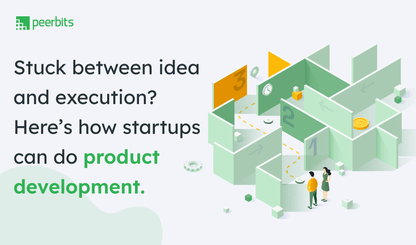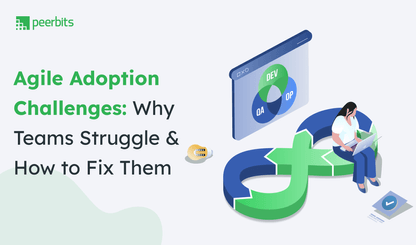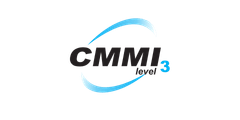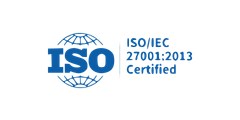The healthcare industry has undergone a major shift, with technology driving efficiency and redefining patient care.
AI-driven diagnostics, robotic-assisted surgeries, and telemedicine are no longer futuristic concepts—they are shaping today’s healthcare landscape. Companies are in a race to develop intelligent, data-driven solutions that simplify complex medical procedures and optimize patient management.
According to Markets and Markets, the global healthcare IT market was valued at $368.15 billion in 2023 and is projected to grow at a CAGR of 14.7%, reaching $420.23 billion in 2024 and $834.35 billion by 2029.
This growth is fueled by advancements in e-prescriptions, mHealth, telehealth, and data analytics, making healthcare more accessible and efficient.
With rapid digital transformation, businesses in the healthcare sector cannot afford to overlook the role of healthcare app development in streamlining operations and improving patient engagement. Let’s explore the key trends shaping the future of healthcare software in 2025 and driving industry-wide innovation.
1. AR and VR in healthcare software
AR and VR are transforming healthcare training, surgical planning, and patient education. These immersive tools help doctors sharpen skills and prepare patients mentally for procedures.
Used together, they reduce human error and improve surgical precision. According to Fortune Business Insights, the VR in healthcare market is expected to reach $46.37 billion by 2032, showing strong demand for immersive medical tools.
For healthcare businesses, adding AR/VR to healthcare app development isn’t just futuristic—it’s becoming a practical move to improve outcomes and care quality.
2. Cybersecurity in healthcare software
Cyber threats are a growing concern in healthcare, with systems often targeted for sensitive patient data. According to Statista 2024, the US healthcare industry faced the highest average cost of data breaches—$11 million.
Modern healthcare app development must prioritize security—preventing unauthorized access, enabling multi-factor authentication, securing sensitive data, and protecting systems like EHRs and e-prescriptions.
Collaborating with a software partner that follows best cybersecurity practices helps reduce risks tied to breaches, hacks, and ransomware.
3. Artificial Intelligence in Healthcare
AI is rapidly becoming a core part of modern healthcare systems—streamlining operations, assisting with diagnostics, and enabling predictive care. It's now used to automate repetitive tasks, support virtual assistants, flag dosage errors, and detect fraudulent claims.
According to Markets and Markets, the AI in healthcare market is projected to reach $164.16 billion by 2030, driven by advanced algorithms, 5G-connected devices, and demand for faster, data-driven decisions.
For businesses investing in healthcare app development, integrating AI isn’t just about innovation—it’s about delivering smarter, faster, and safer healthcare experiences. Partnering with a tech team experienced in AI-driven software can help you build tools that are accurate, scalable, and built for tomorrow.
4. IoMT (Internet of Medical Things)
Today’s healthcare is smarter and more connected than ever. Internet of Medical Things (IoMT) integrates wearables, monitoring devices, and MedTech tools to streamline care delivery and improve real-time decision-making. From remote patient tracking to automated alerts and optimized workflows, IoMT is helping hospitals reduce costs and improve patient outcomes.
According to Fortune Business Insights, the IoMT market is expected to hit $814.28 billion by 2032, reflecting the massive shift toward intelligent, connected healthcare solutions.
For businesses building digital health platforms, integrating IoMT into your healthcare app development strategy is no longer optional—it’s the new normal.
5. Big Data Analytics
Hospitals and healthcare systems generate massive volumes of data daily—from patient records to imaging files. Big data analytics helps convert this into actionable insights for better decision-making and care delivery.
It supports personalized treatments, risk prediction, diagnostics, and public health strategies—all based on real-time and historical patient data.
According to Presedence Research, the big data analytics market in healthcare is expected to reach $327.57 billion by 2034. driven by the growing need for data-driven healthcare intelligence.
For healthcare companies, embedding big data tools into healthcare app development opens doors to deeper insights, reduced costs, and improved patient outcomes.
6. Blockchain for secure healthcare systems
Data security remains a top priority in healthcare software development. Blockchain offers a decentralized and tamper-resistant method for storing patient records, verifying identities, and managing data access without compromising privacy.
It helps reduce administrative tasks, improves transparency in insurance workflows, and protects sensitive information shared across patients, providers, and payers.
According to market data, the blockchain in healthcare market is expected to reach USD 527.61 billion by 2031, showing how quickly the industry is adopting it as a trusted security layer.
For businesses investing in healthcare, adopting blockchain app development can support stronger compliance, prevent data fraud, and create a more trustworthy environment for digital healthcare platforms.
7. Cloud transformation in healthcare
Cloud technology is reshaping how healthcare organizations manage operations and deliver patient care. Shifting critical systems, data, and applications from on-site infrastructure to the cloud enables faster software deployment, improved data accessibility, and scalable service delivery.
According to market forecasts, the global healthcare cloud computing market is expected to reach USD 120.6 billion by 2029. This growth reflects how cloud transformation is becoming a strategic priority across the industry.
Hospitals and clinics of all sizes are adopting cloud-based healthcare software development to streamline workflows, reduce infrastructure costs, and improve care coordination.
Real-time access to patient information and centralized data handling is no longer optional—it is now integral to delivering responsive and efficient healthcare.
8. Telehealth and remote monitoring
Telehealth has moved from being an alternative to becoming a core pillar of healthcare service delivery. As patients seek more flexible and accessible care, healthcare providers are increasingly turning to virtual consultations and remote monitoring solutions to meet expectations while optimizing clinical resources.
According to recent statistics, the global telehealth market is projected to reach over USD 175.5 billion by 2026. This growth reflects how organizations are prioritizing digital care models to serve both urban and rural populations more efficiently.
Remote patient monitoring tools, integrated with telemedicine app development, are enabling real-time health tracking, proactive interventions, and better chronic disease management.
From wearable devices to virtual follow-ups, these solutions help reduce hospital visits and free up clinical resources while keeping patients more engaged in their care.
9. Remote patient monitoring
Remote patient monitoring (RPM) is becoming a strategic pillar for healthcare providers aiming to deliver continuous care beyond clinical settings. As digital health tools mature, RPM systems are gaining traction for their ability to track patient vitals, medication adherence, and chronic conditions in real-time.
According to Wissen Research, the global remote patient monitoring market is projected to reach USD 88 billion by 2030. This growth signals a strong push toward tech-driven patient care models that reduce hospital readmissions and optimize clinician workload.
Whether it is post-surgery follow-ups or chronic disease tracking, RPM solutions built through custom healthcare software development are helping healthcare providers scale their services, collect more meaningful data, and improve patient outcomes.
For healthcare businesses, this means fewer touchpoints with more impact and smarter resource allocation without sacrificing care quality.
Read more: Role of Remote Patient Monitoring (RPM) in Improving Patient outcomes
10. Personalized medicine
Personalized medicine is reshaping healthcare by shifting the focus from standardized care to patient-specific solutions. Treatments are now being tailored based on genetics, behavior, and medical history, leading to improved diagnoses, reduced side effects, and more effective outcomes.
According to Statista, the global personalized medicine market was valued at USD 655 billion in 2024 and is projected to reach USD 1,104 billion by 2030. This surge reflects the growing need for precision healthcare solutions and data-driven medical decisions.
With advanced healthcare app development, companies can use AI models, genetic mapping, and integrated patient data to support this new care model. From predicting disease risks to customizing drug responses, personalized medicine has become a strategic priority for forward-thinking healthcare organizations.
Conclusion
Adopting the right healthcare software development trends in 2025 is no longer optional—it’s a smart move for improving patient experiences, reducing manual errors, and supporting your medical team with better tools. These advancements are reshaping how care is delivered and how systems perform.
From stronger data protection to more flexible operations, modern healthcare software has the potential to drive real impact across your organization. The next step is to collaborate with a reliable healthcare app development company that understands your unique goals and can build custom solutions to help you move faster, operate smarter, and deliver higher-quality care.









